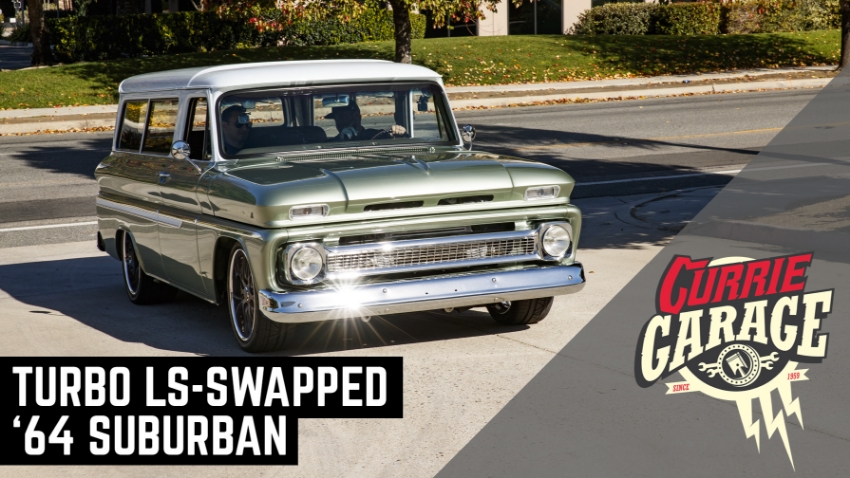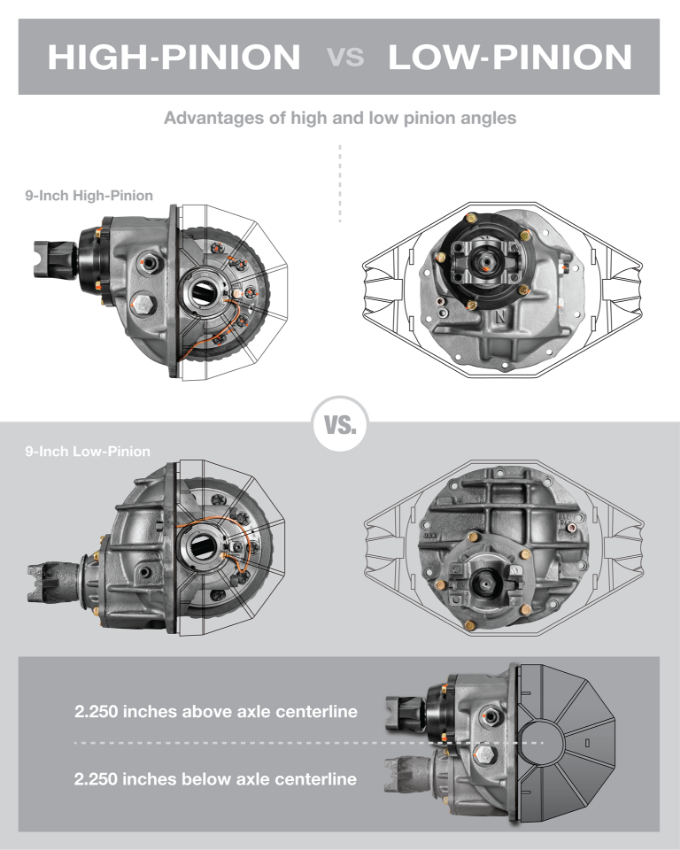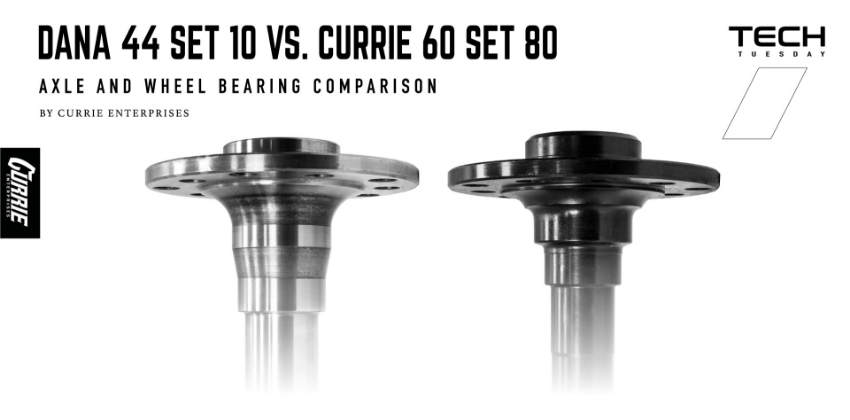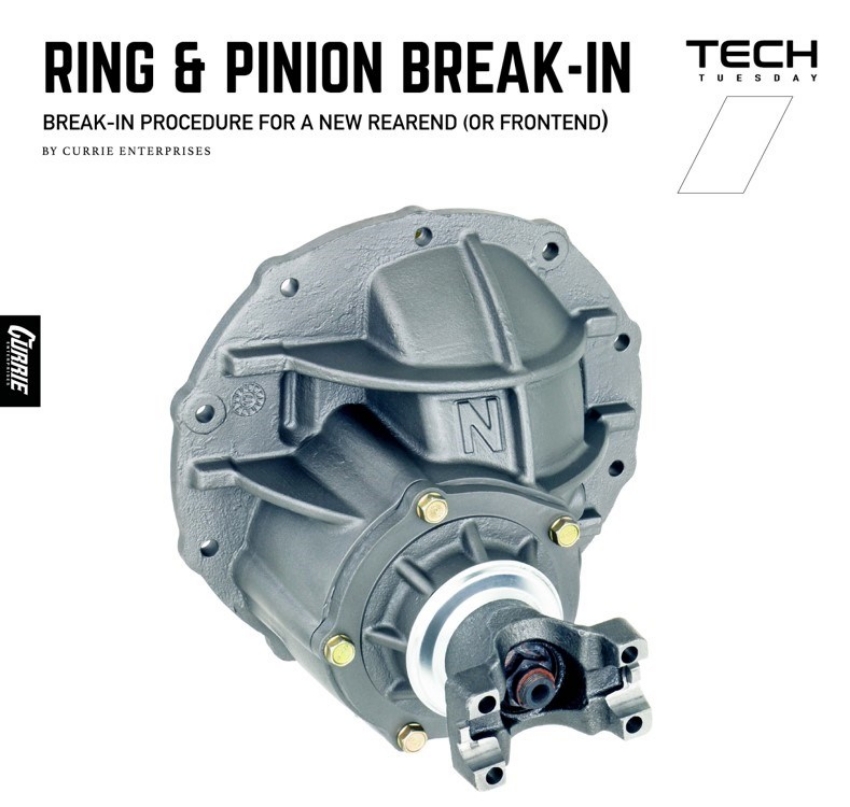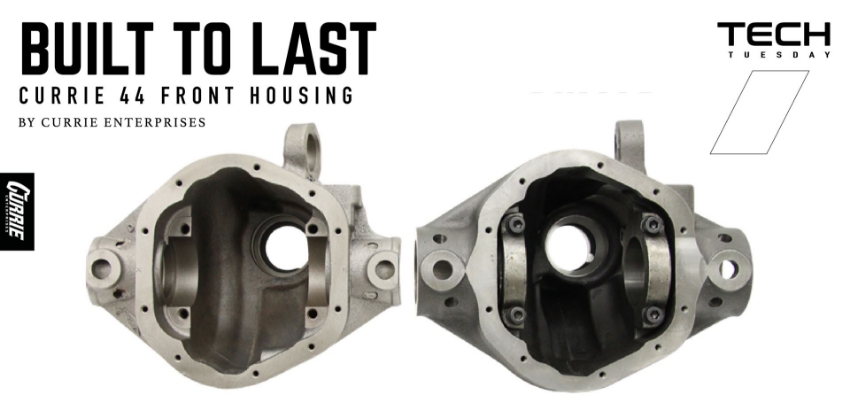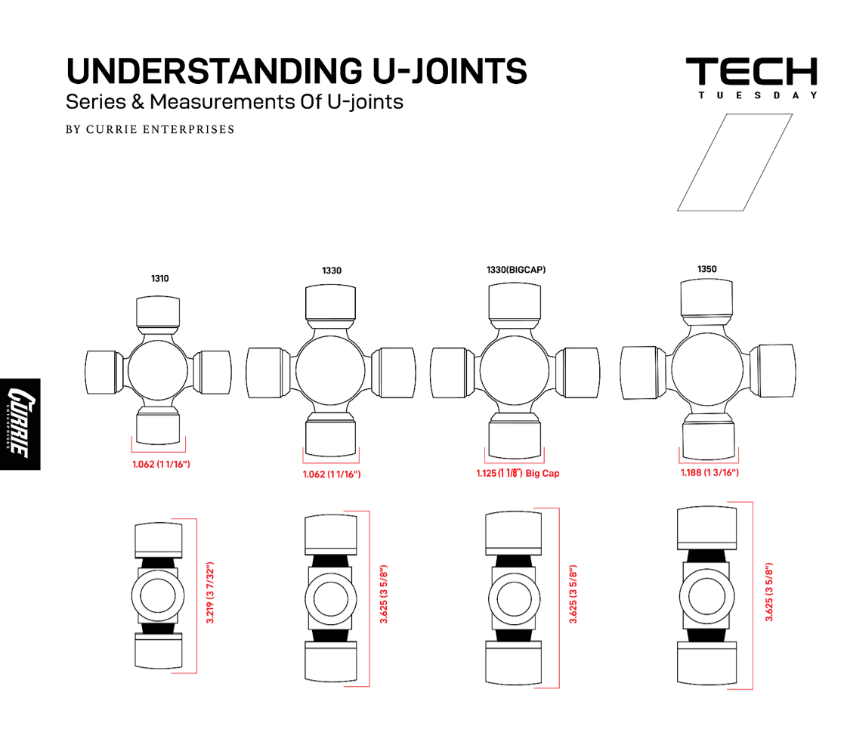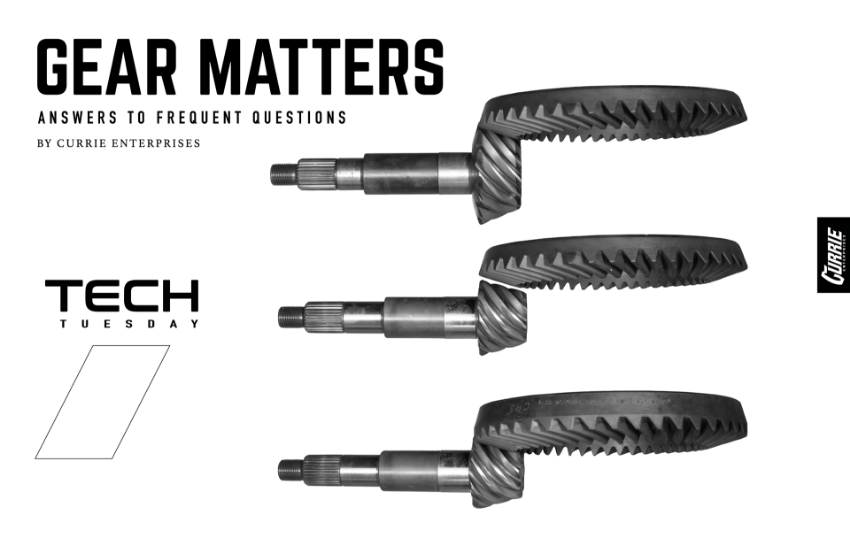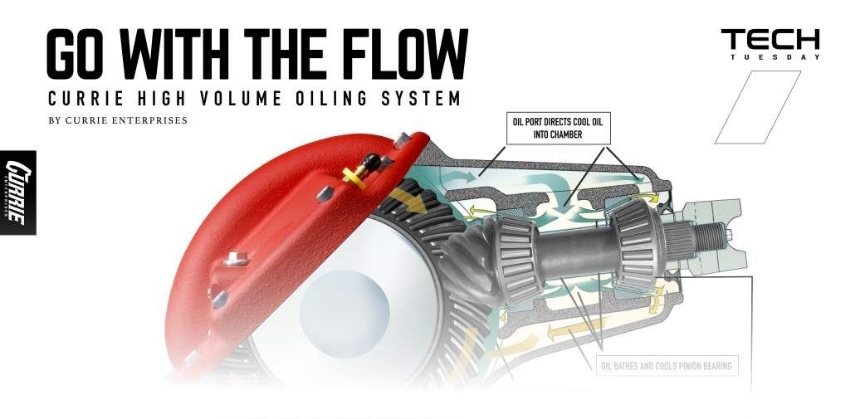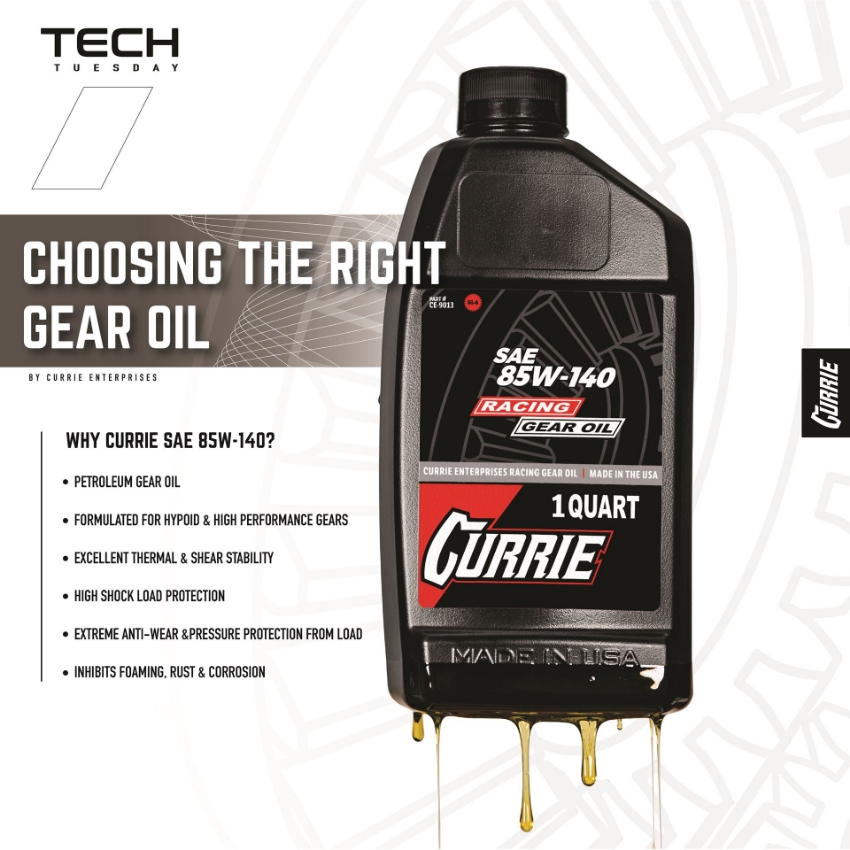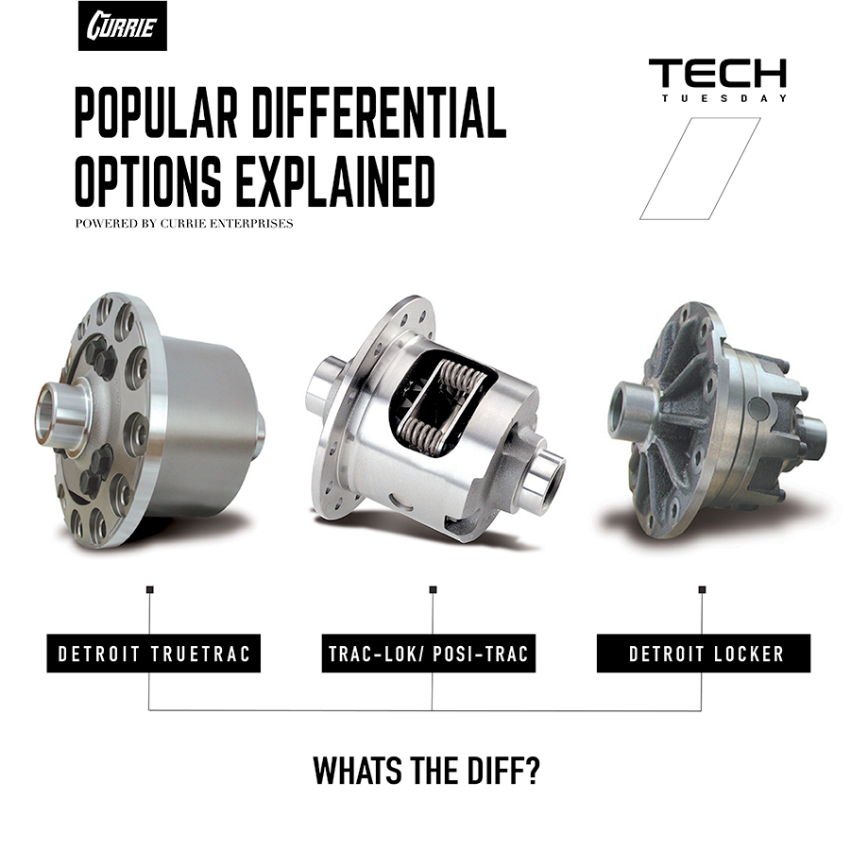- Register
- Log in
-
Shopping cart
(0)
You have no items in your shopping cart.
Tech Articles
Following the introduction of our 9-inch axle assemblies for Jeep Wrangler and Gladiator vehicles, we have received many inquiries regarding the differences between the high and low-pinion options and which is appropriate for specific applications. To help shed some light on the topic, we have assembled a list of key points for each.
High-Pinion 9-Inch
- Highest driveshaft clearance of any axle - Places the driveshaft 2.25" above the axle centerline for maximum obstacle clearance off-road
- Equipped with ring gear load bolt to eliminate gear deflection and achieve maximum gear strength
- Uses custom reverse rotation gears for both front and rear axle applications
- It's not just a low-pinion turned upside-down, it's an entirely different case, pinion support, and gears
Low-Pinion 9-Inch
- Ideal pinion location for maximum gear strength, but sacrifices some ground clearance
- Uses standard cut gears in both front and rear axle applications, the best option for towing or high horsepower
- Equal or greater gear strength to a low-pinion 60
Common Features
- Available with 9" or 10" gears, allowing strength to be tuned based on needs
- Removable center section improves serviceability
If you have any questions or just need help to decide which is right for your application, give our experts a call at (714) 528-6957
Today on Charlie's Corner, Charlie Currie tells about his 1965 LS3 Supercharged SS Chevelle. Complete with Currie Rearend, Baer Brakes, and Foose Wheels. On Charlie's Corner we'll take a full look at all of Charlie's cars and how he came to acquire them.
Hit the link for the full series. Charlie's Corner
Casey and Ray Currie lead a group of Jeepers including Craig Scanlon and Joey D. from 4 Wheel Parts up Gold Mountain Trail in Big Bear, CA. The trail had recently been covered in snow, making for some challenging wheeling!
For more video content, subscribe to our Youtube Channel Here
Today on Charlie's Corner we take a look at Charlie Currie's 1965 2 Door Chevy Station Wagon. On Charlie's Corner we'll take a full look at all of Charlie's cars and how he came to acquire them.
Hit the link for the full series. Charlie's Corner
On Part 2 of the Alcan 5000 Rally we head into the Arctic circle for more frozen river driving and some donuts at the Arctic Ocean. Mel Wade gets in a tug of war with another competitor and we finally make it to Alaska.
For more video content, subscribe to our Youtube Channel Here
A couple weeks ago Ray Currie took an amazing trip up to Canada and Alaska to compete in the Nitto Tire Alcan 5000 Winter Rally. A 10 day race that puts you in the winter elements of the North West. Ice, snow, blizzards, wild animals, and frozen rivers make up the extreme terrain.
For more video content, subscribe to our Youtube Channel Here
People in the off-road community are generally aware that a Currie 60 semi-float rearend is more substantial and much stronger than the stock Dana 44 found under the rear of the Jeep Wrangler. However, the strength differences go beyond the much talked about details of the center section, axle tubes, and gear size and extend to the less visible larger diameter axle shafts and axle bearings.

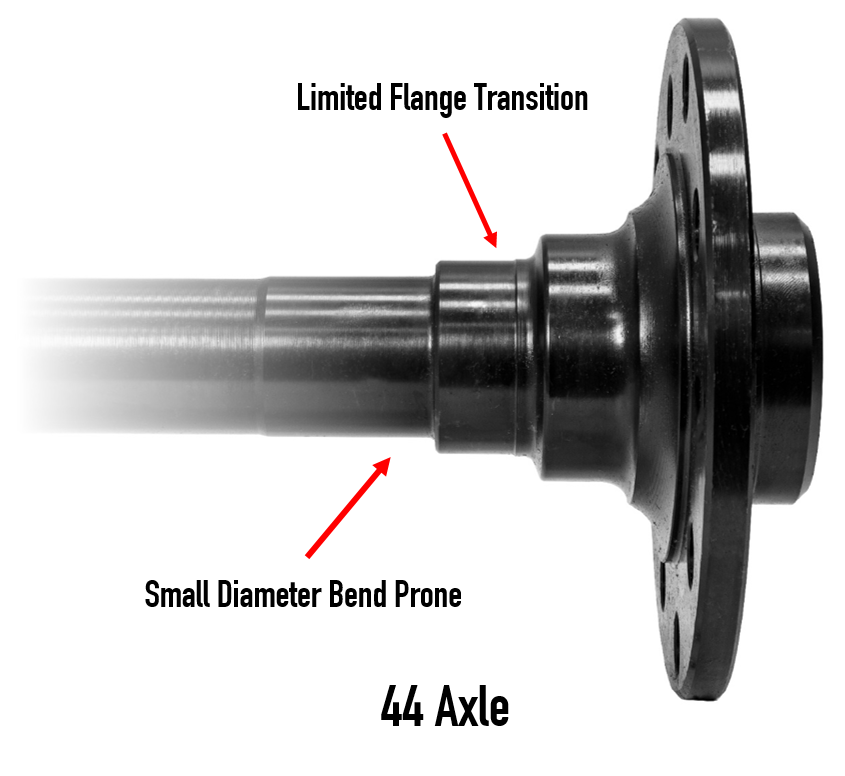
The 44's 30-spline (1.3-inch diameter) axle shafts, and relatively small "Set 10" axle bearings, are adequate for a moderately-driven trail Jeep with stock-sized tires. However, when you start modifying your Jeep with larger tires and more gear, the axles and bearings can become weak links. These stock components can be costly failure points that lead to the immediate cessation of fun and a very inconvenient trailside repair.
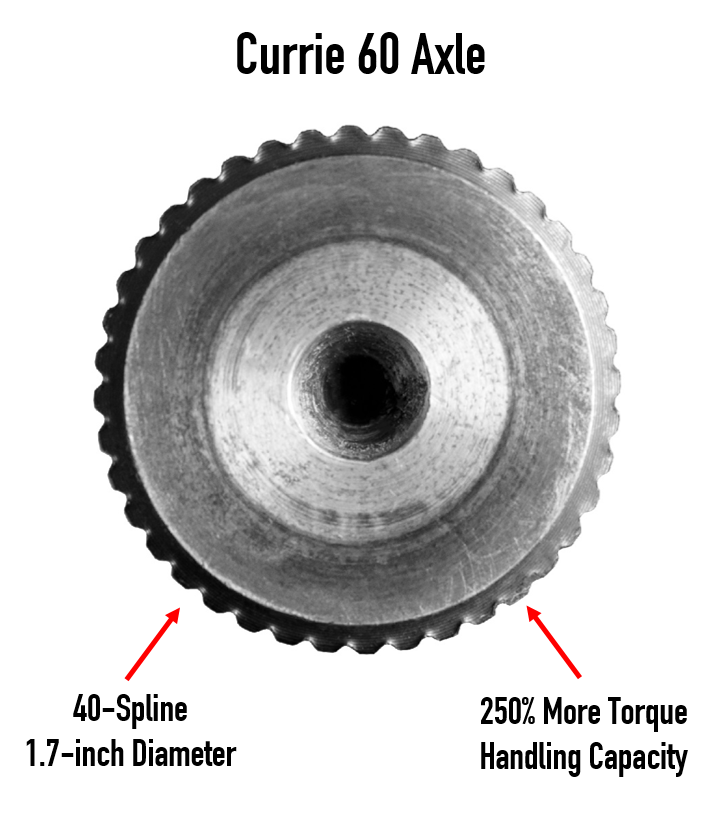
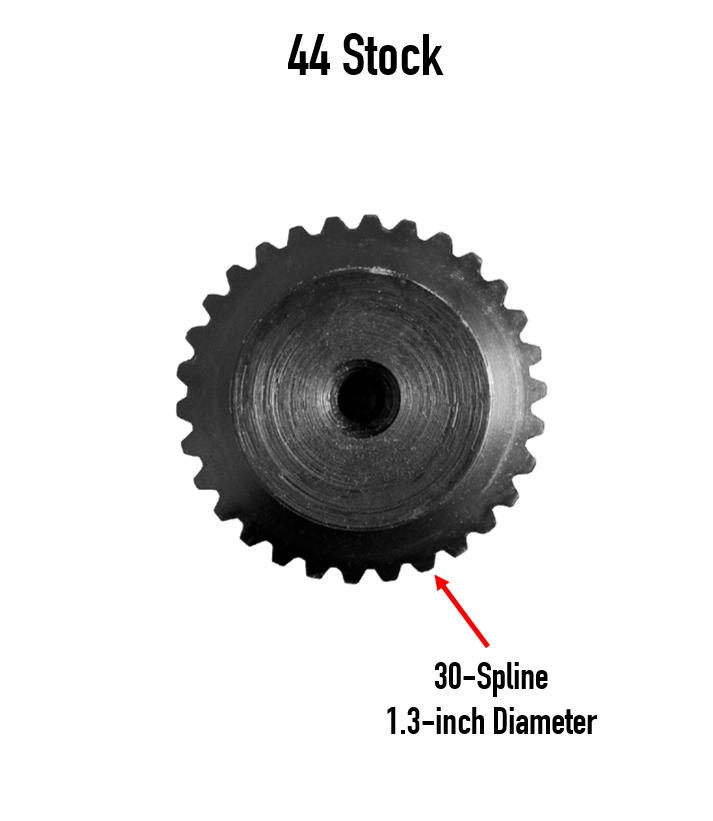
The Currie 60 axles feature more substantial construction and a much larger 40-spline (1.70-inch diameter) axles and "Set 80" bearings. The larger axles and bearings can handle much more aggressive off-road use. The Set 80 bearing enables the use of 40-spline axles that can take 250% more torque and supports increased axle diameter through the bearing for a 146% improvement in bend resistance. Additionally, the more significant Set 80 bearing is capable of carrying 124% more weight and can take 122% more side-load than the smaller Set 10 bearings, enabling the axle to resist greater bending stresses and handle larger tires.
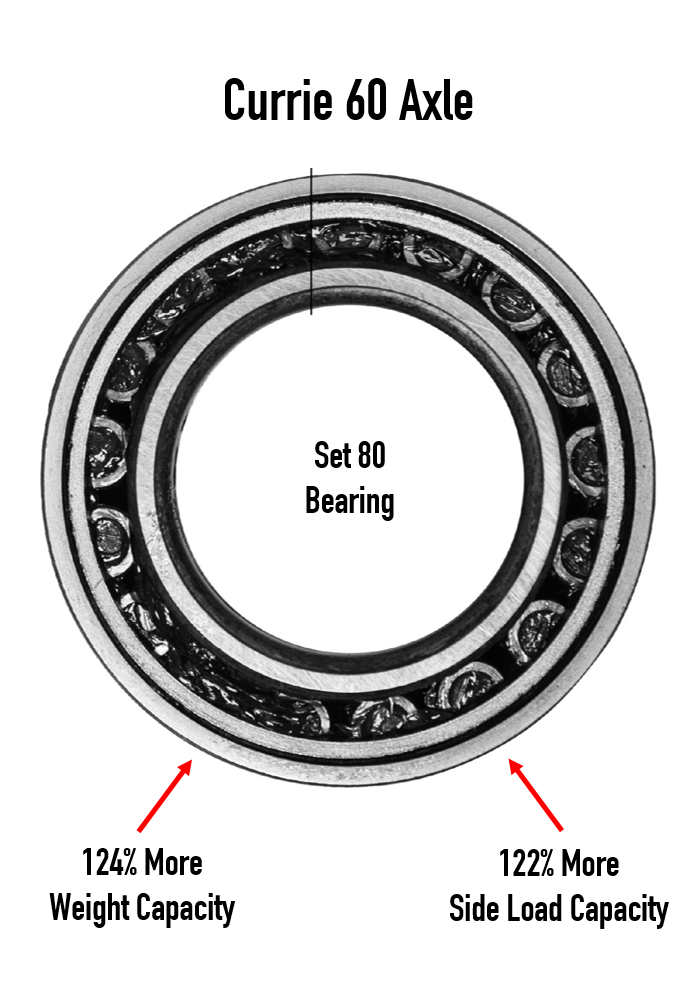
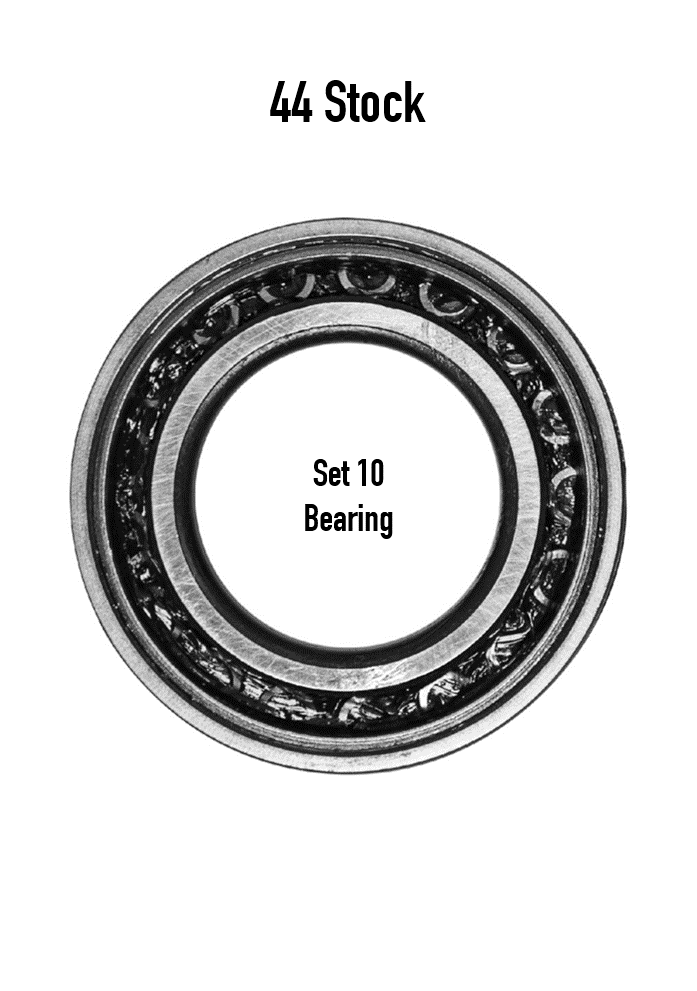
Common D44 axle failures include shearing at the splines due to excessive twisting under torque and failure of the axle flange from impacts, including side loading caused by large tires. The axle bearings don't generally get singled out as a failure point, but due to the Set 10's small internal diameter, it effectively limits the maximum size and overall strength of the axle assembly. Because of these shortcomings, Currie's 60 series off-road semi-float axles come with the larger Set 80 bearings to ensure your rig will make it through the toughest terrain without the risk of failure due to a wheel bearing.
The break-in procedure for a new rear end (or front end) is a relatively simple task; however, it needs to be done correctly to ensure a long-lasting setup. The idea is to mate the ring and pinion gear tooth surfaces together, which, if done improperly, can lead to premature gear wear – however, it's not as complicated as it sounds. Because the ring and pinion are machined separately at the factory, it's important to "introduce" these surfaces together by putting a load on the setup, letting it cool, and then progressively adding more load (speed) until the gears are in sync with each other. This is easily achieved by simply "cruising" your vehicle at typical street speeds in specific steps. At Currie, we recommend the initial break-in to start by driving normally for 15-20 minutes (no burnouts, hard starts, or highway driving), then letting the vehicle rest for 30 minutes, never going over 50 miles without letting it cool. Towing and high speeds should also be avoided until after the break-in (300-500 miles). Once this is achieved, we recommend you change the oil.
Break-in Tips:
Street Driving
Drive normally on streets for approximately 15-20 minutes, stop, and then let the rear end cool down for 30 minutes. The process should be repeated two to three times. The oil should be changed at 500 miles. Don't be alarmed if this first oil change comes out much darker than when it went in, as the black phosphate coating is wearing off the gears, along with a minimal amount of steel from the bearings, gears, and differential wearing in.
Towing Vehicles
Drive at low loads for a total of approximately 300 to 500 miles of mixed street (see above) and highway driving before towing any load.
Drag Race Vehicles
Due to the short duration of use and low potential for heat build-up, it is only necessary to perform an initial run-in with the driven wheels off the ground, the vehicle idling in high gear for approximately 15 minutes, and then allow the rear end to cool. Once this initial heat/cool cycle has been completed, many will further break in the gears with a quick burnout or even a short track run before changing to fresh gear oil.
Off-Road Vehicles
The break-in procedure for off-road vehicles such as Jeeps and trucks is the same as it is for street-driven vehicles. When breaking in new gears or axle assemblies on the trail, avoid sand washes, big whoops, and inclines, as these can load the gears prematurely.
Break-In Alternatives
REM® Gear Polishing
The REM ISF® (Isotropic Superfinish) process uses a proprietary combination of vibratory finishing equipment and refinement chemicals to achieve a smooth micro-textured finish that reduces friction, improves oil retention, and increases gear durability. Additionally, REM polishing eliminates the need to perform the standard break-in procedure. However, a 500-mile oil change is still required to remove contaminants from the break-in of other components, such as the bearings and differential. REM polishing is available for an additional charge for all ring and pinion gear sets purchased from Currie.
Dyno Break-in
Currie offers a dyno break-in service for new or rebuilt 9-inch third members that go through our shop as an alternative to the traditional break-in procedure. The dyno brake-in procedure spins the third member in a fixtured rear end for 20 minutes to allow the unit to reach operating temperature, after which it's allowed to cool, completing the initial run-in of the gears and bearings. The dyno break-in service is available for a fee and can help save some time and ensure your third member is quiet.
Many Jeep owners have discovered that the stock Dana 30 and 44 front axle housings under their vehicles are the weak links in an otherwise capable 4x4. While the factory D44 of the Wrangler JK Rubicon features stronger gears and axles, it, unfortunately, shares the same failure-prone axle tubes, inner "Cs," and cast center section of the D30 found in all other Wrangler, Cherokee, and Comanche models.
Issues with the stock D30/44 housings bending or even breaking can arise with moderate off-road use, especially when combined with 35-inch or larger tires.
At the heart of the Currie 44 lies a massively reinforced high-pinion nodular iron center section with additional material in critical areas, which delivers superior strength and rigidity (images below) over the stock housings.
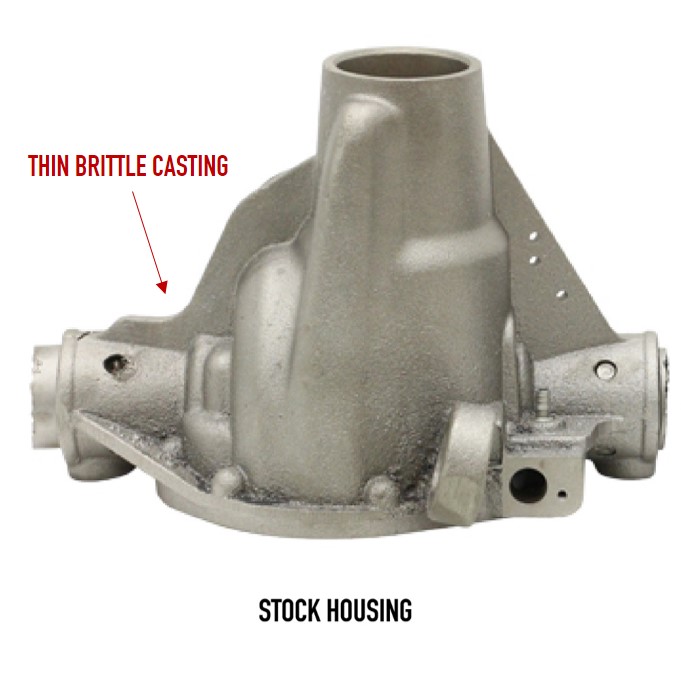
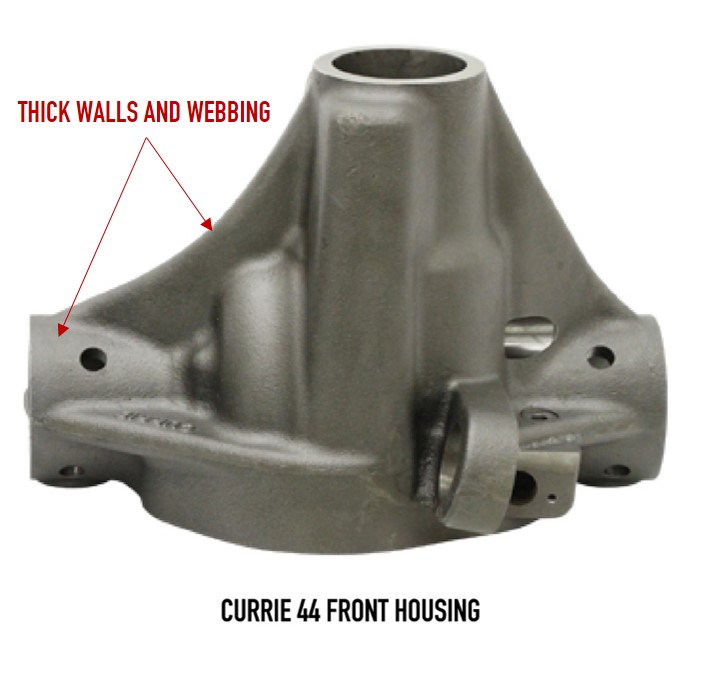
Two models of the Curie 44 center section are offered. For Wrangler JK Rubicon direct replacement, a center section machined to accept the factory Rubicon electric locker and axles is available. For all other applications, a standard version is available that takes aftermarket lockers, such as those offered by ARB or Eaton. Regardless of the version ordered, both use the larger JK Rubicon D44 gears and axles for maximum strength.
Pressed and rosette welded into the center section are large 3-inch diameter .500 wall axle DOM tubes, which are more than twice as strong as the stock Dana 30/44 tubes without sacrificing ground clearance (image below).
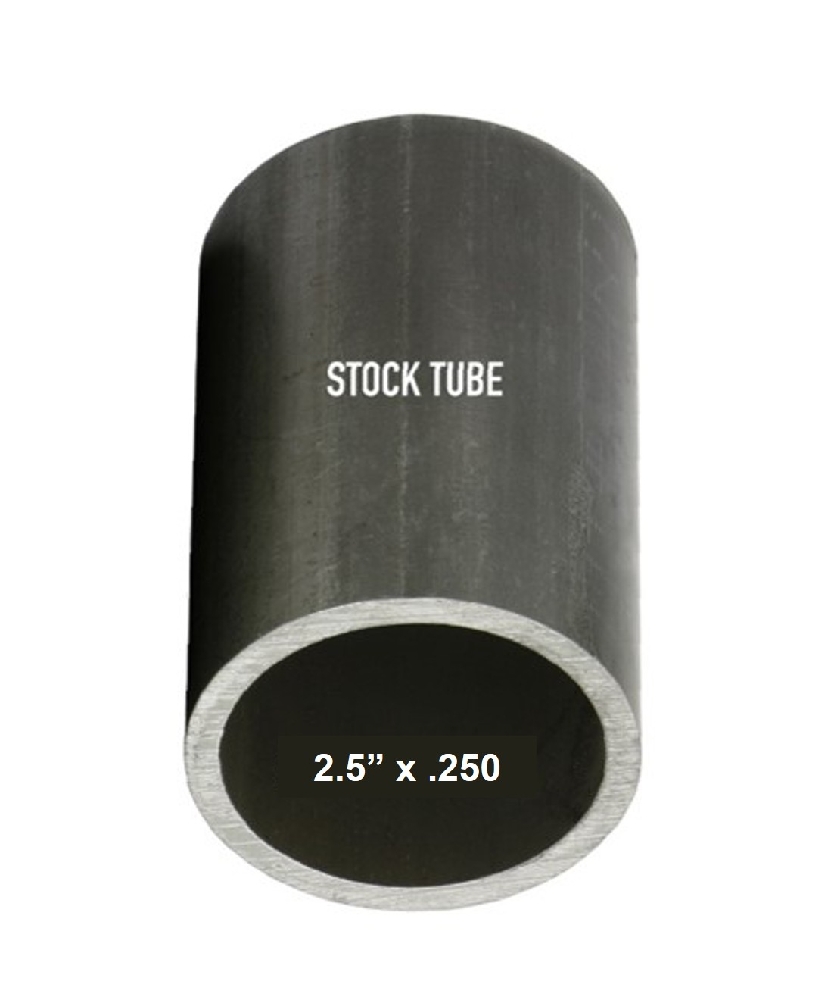
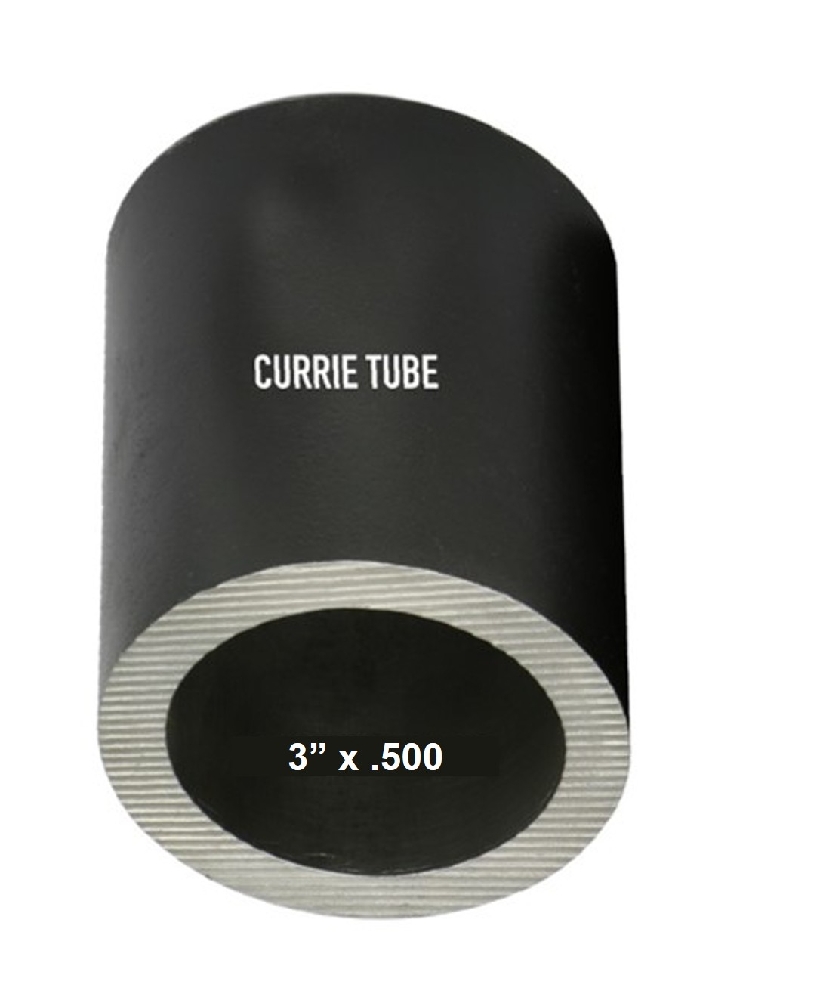
Currie heavy-duty forged inner Cs are massively stronger than the stock D30/44 units and are designed for severe off-road use with up to 37-inch tires. To assure maximum strength, the knuckles are joined to the axle tubs with welds both inside and out (image below).
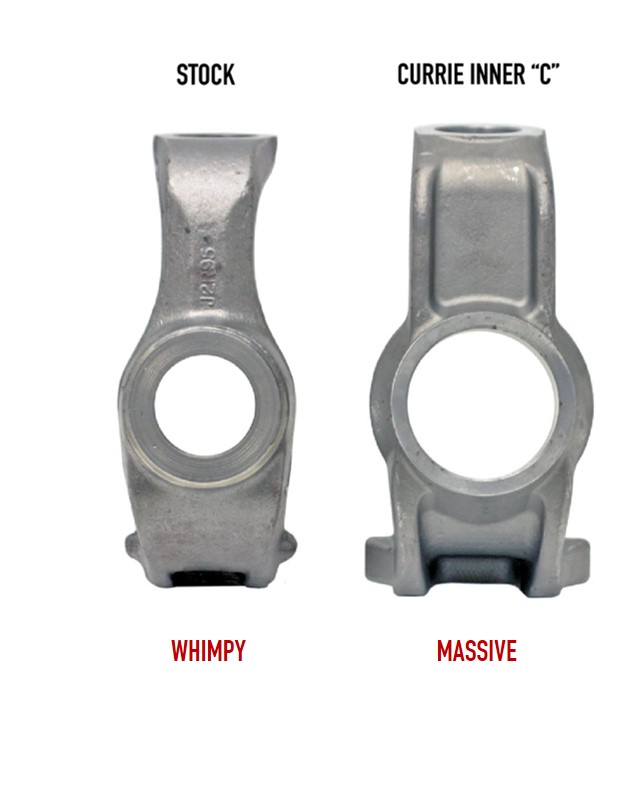
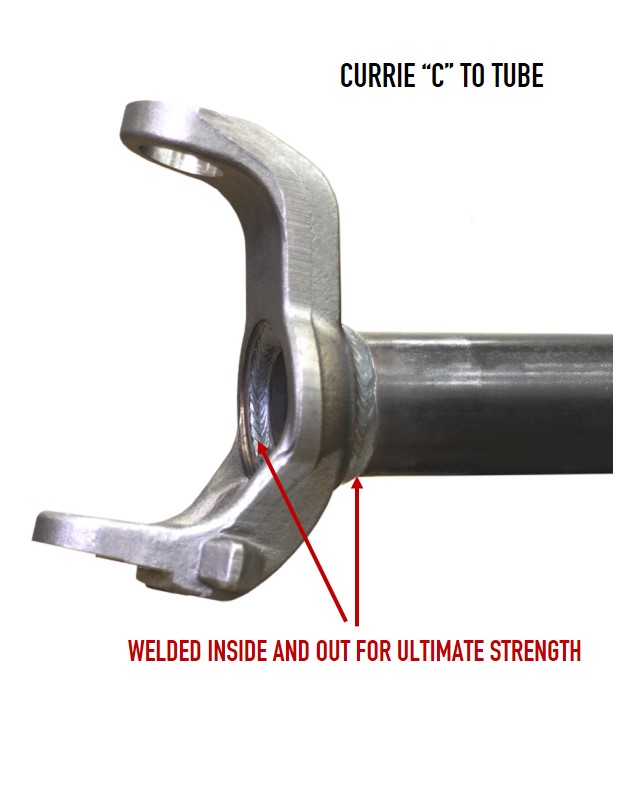
Complete bolt-in Currie 44 axle assemblies are available for Jeep Wrangler TJ, JK, Cherokee, and Comanche models as well as early Ford Bronco. Custom units are available for most applications.

When building a custom street rod or muscle car with driveline components from multiple sources, it is not uncommon to encounter u-joints of different sizes. Because your vehicle is now a custom application, going to the local auto parts store and looking up a u-joint by year-make-model won't work. But don't despair; with some simple measurements, it's possible to determine the required u-joints.
Most common driveshaft u-joints applications will use outside locks, where lugs (image 1) or snap rings (image 2) are used to secure and align the u-joint caps in the yoke.
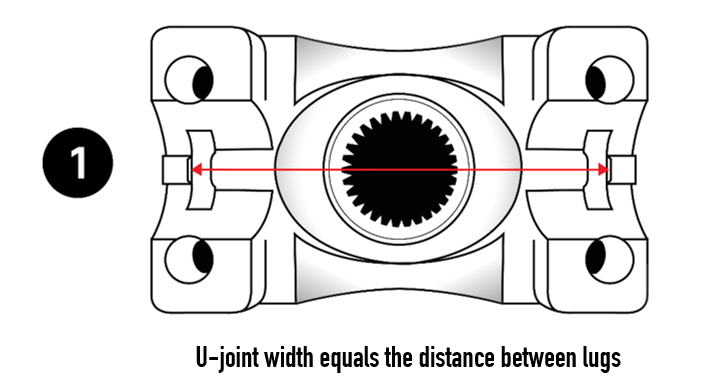
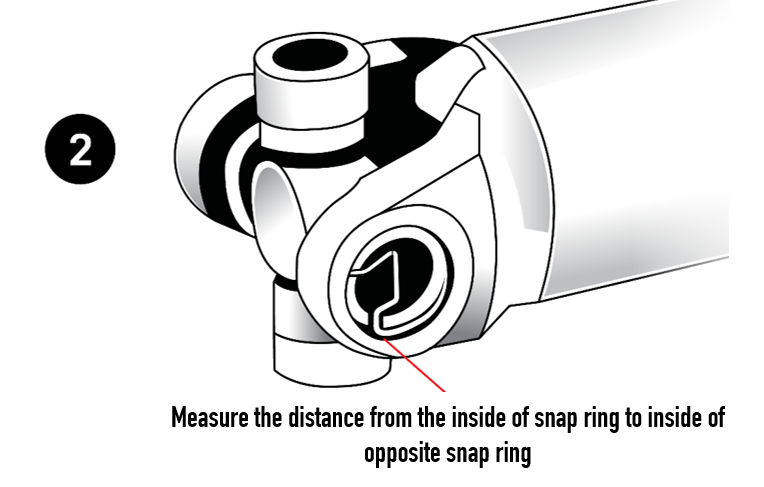
Determining the u-joint series for external lock applications is a simple matter of measuring a few critical dimensions.
Measuring for Driveshaft U-joint Fitment
If you don't have the u-joint
1) Measure the distance between the lugs of the transmission and pinion yokes and the distance between the snap rings of the driveshaft yoke to attain the overall widths
2) Measure the yoke gap and the diameter at the cap location to get the cap diameters.
Make sure to check all of the width and diameter dimensions, as they may be different. If the dimensions do not match, you may require a conversion u-joint.
If you have the u-joint
1) Measure the outside distance across the u-joint (with caps installed)
2) Measure the diameter of the caps
Make sure to check all of the width and diameter dimensions, as they may be different.
Standard u-joints sizes are classified by series, with each series having specific cap diameter and overall joint width. Typically speaking, a higher series number translates to a stronger joint.
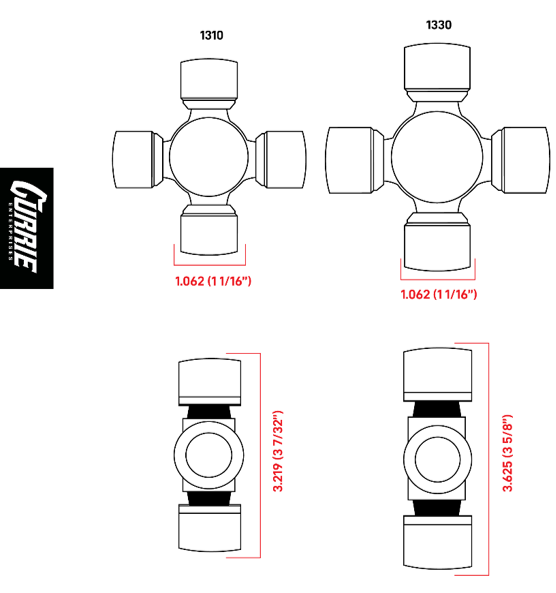
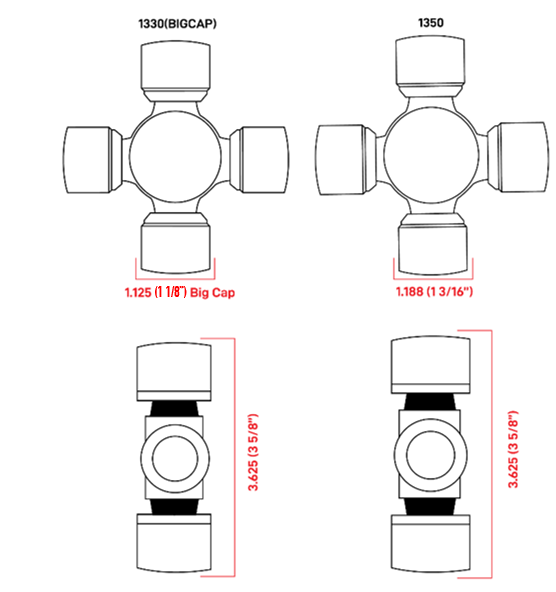
Standard U-joint Series, Dimensions and Part Numbers
|
Series |
Cross Width |
Cap Diameter |
Spicer P/N |
|
1310 |
3.219 (3 7/32”) |
1.062 (1 1/16”) |
5-1310X |
|
1310BC* |
3.219 (3 7/32”) |
2 @1.062 (1 1/16”) |
5-7439X |
|
1330 |
3.625 (3 5/8”) |
1.062 (1 1/16”) |
5-1330X |
|
1330BC* |
3.625 (3 5/8”) |
2 @ 1.062 (1 1/16”) |
5-7438X |
|
1350 |
3.625 (3 5/8”) |
1.188 (1 3/16”) |
5-1350X |
*BC denotes Big Cap, a Ford creation with two thicker caps to resist the deformation caused by over-torquing of the u-bolt straps.
Conversion or combination u-joints include a mix of two different series specifications in the same joint so that that mismatched yokes and driveshafts can be connected. The caveat is that the joint is only as strong as the smaller series.


Conversion U-Joint Series, Dimensions and Part Numbers
|
Series |
Cross Widths |
Cap Diameter |
P/N |
|
1310/1330 |
3.22 (3 7/32”) |
1.062 (1 1/16”) |
Spicer |
|
1310/1330BC* |
3.22 (3 7/32”) |
2 @ 1.062 (1 1/16”) |
Neapco |
|
1310/1350 |
3.22 (3 7/32”) |
2 @ 1.062 (1 1/16”) |
Spicer |
|
1330/1330BC* |
3.625 (3 5/8”) |
2 @ 1.062 (1 1/16”) |
Spicer |
|
1330/1350 |
3.625 (3 5/8”) |
2 @ 1.062 (1 1/16”) |
Spicer |
|
1330BC*/1350 |
3.625 (3 5/8”) |
2 @ 1.125 (1 1/8”) |
Neapco |
*BC denotes Big Cap, a Ford creation with two thicker caps to resist the deformation caused by over-torquing of the u-bolt straps.
Strength Ratings
U-joint strength depends on many factors, including material type, body design, the presence of a zerk fitting, cap size, etc. The chart below summarizes the continuous lifetime operating torque and yield torque values (the point at which the u-joint begins to deform)
U-Joint Series Torque Ratings
|
U-Joint |
Continuous Lifetime |
Yield |
|
1310 |
130 lb-ft |
1,600 lb-ft |
|
1330 |
150 lb-ft |
1,850 lb-ft |
|
1350 |
210 lb-ft |
2,260 lb-ft |
U-Joint Strap Kits
| U-Joint Series |
Width Center/Center |
Torque Specifications |
Currie Strap Kit P/N |
| 1310/1330 | 1.416 in. | 14-17 Ft-Lbs | CE-4058 |
| 1330 BC* | 1.590 in. | 14-17 Ft-Lbs | CE-4059 |
| 1350/1410 | 1.666 in. | 20-24 Ft-Lbs | CE-4060 |
*BC denotes Big Cap, a Ford creation with two thicker caps to resist the deformation caused by over-torquing of the u-bolt straps.
At Currie Enterprises, we discuss the details of ring and pinion gears with our customers every day. While many of the conversations are difficult to summarize, many are of a straightforward, technical nature that can be addressed with a more concise question and answer format. Below (in no particular order) are some of the most frequent topics.
Q: What is a carrier break?
A: Axle assemblies are designed to accept a wide range of gear ratios, and most will have two different carrier or differential offsets (see image) to accommodate a “break” between numerically low and high gear ratios. The term carrier break describes the point at which a different carrier is required. The carrier break offset compensates for the difference in pinion gear diameters between low and high ratio gears (see image). A Dana 60 has a carrier break between 4.10/4.56 ratios, meaning that ratios numerically lower than 4.10 will use one carrier, while numerically higher gears will use another. The point at which the carrier break takes place varies by axle manufacturer and model. Ford corporate axles like the 8.8, 9, 9.75, 10.25 and 10.5-inch, do not use carrier breaks, but instead, rely on varying ring gear thicknesses to compensate for the change in pinion head diameter.
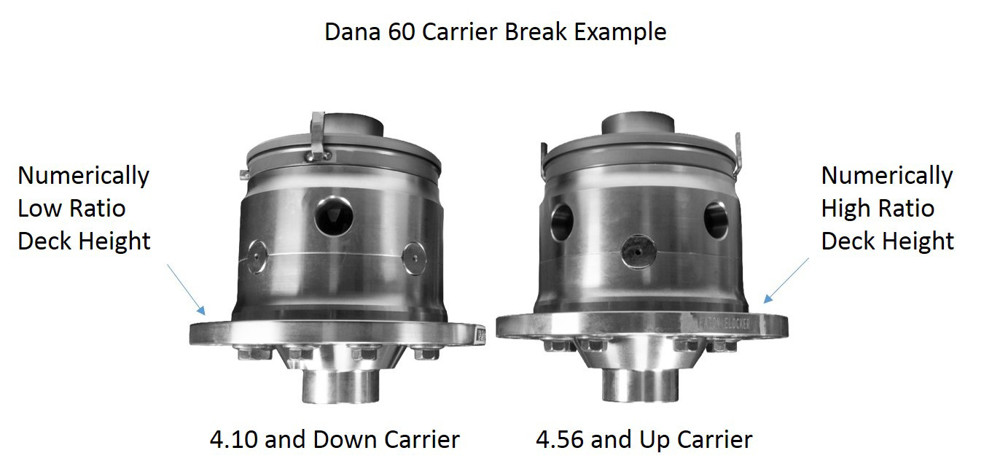
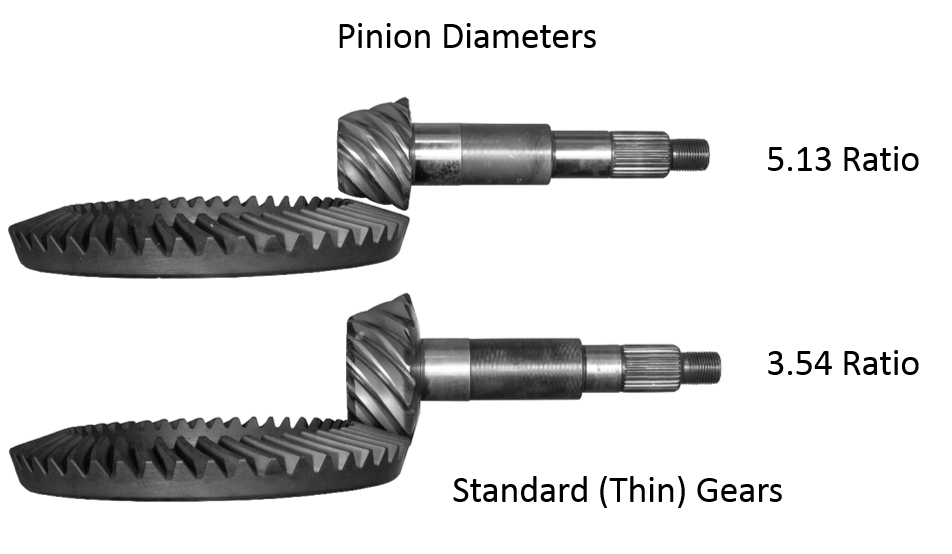
Q: What are thick and thin gears?
A: The term "thin gear" is a bit of a misnomer, in that the gears are not thin, but are rather standard OEM production gears. Thick gears, on the other hand, are predominately aftermarket gears that are manufactured with additional material to increase the overall thickness. The additional thickness is an exact match for the offset of the carrier break and allows a numerically high thick gear to be installed on a low carrier. A typical example is an F-250 truck with a D60 front and factory 3.73 gears, switching to a 4.88 ratio would generally require a carrier change (see carrier breaks above). However, using a thick gear allows the stock low carrier to be retained.

Q: Are thick gears stronger than thin gears?
A: We wish there were some engineering data to answer this question definitively, but unfortunately, we don't think it exists. Our standard practice is to use thick gears in all of our off-road axles. If the extra material makes them stronger, that’s great; if not, then there’s no harm done. With regard to the on-road performance side, it's a bit of a moot point, because the 9-inch rearend does not have a carrier break, so for this application, there's no such thing as thick or thin gears.
Q: What's the difference between 8620 and 9310 gears?
A: The standard answer is, 8620 is used for street/strip gears where a hard long-wearing gear is desirable, and 9310 is used for high-impact racing applications where a softer (but tougher) gear is needed. However, that's not the full story, as advancements in custom heat-treating have made it possible to create 9310 gears that are capable of excelling at both roles. The 8620 material is a low-nickel steel alloy that produces a very hard and somewhat brittle gear. 9310 is a superior alloy that contains additional chromium and nickel, enabling it to be more malleable or flexible, and able to withstand higher shock loads without fracturing.
Heat-treating is the secret sauce that, in large part, determines the properties of a finished gear. Modern gears go through a computer-controlled heat-treating process that is tuned to achieve the desired outcome. Both 8620/9310 can be heat-treated to similar surface hardness, but 8620 cannot be made as malleable or tuff as 9310.
Historically, 9310 gears were used for drag racing, and the heat-treat process was engineered to maximize the alloy's malleable property to the detriment of hardness. This is the reason most people believe that 9310 gears are soft and only suitable for drag racing. However, with proper heat-treatment 9310, alloy gears can be nearly as hard as an 8620 gear, while retaining most of the malleability that makes them tuff. As an example, the ring and pinion gears used in our Currie 70 high-pinion axle, are manufactured from custom heat-treated 9310 alloy and have proven their on-road durability and off-road toughness over many years of harsh use.
For more than two decades, Currie Enterprises has offered strong, durable high-pinion axles for a variety of applications. Besides overall strength, a critical element in long term reliability is pinion bearing lubrication. On high-pinion setups, the location of the pinion gear and yoke are elevated for improved ground clearance, so the oiling system design must overcome gravity to achieve proper lubrication.
A standard low-pinion axle places the pinion bearings below the static gear oil level, where they are by default covered in a bath of gear oil. Conversely, a high-pinion axle puts the pinion bearings above the static gear oil level, so the engineers at Currie implemented a unique design to assure that a sufficient flow of gear oil is present to lubricate and cool the bearings.
By integrating a high-volume flow-through oiling system (pictured below) that incorporates a large port above the pinion gear, Currie’s high-pinion axles deliver a constant flow of gear oil into a chamber that supplies the pinion bearings with fresh gear oil at all times. In operation, gear oil is lifted and pumped into the port by the rotation of the ring gear, as the port fills the chamber, gear oil flows through the bearings and back to ring gear, ensuring adequate lubrication and cooling.
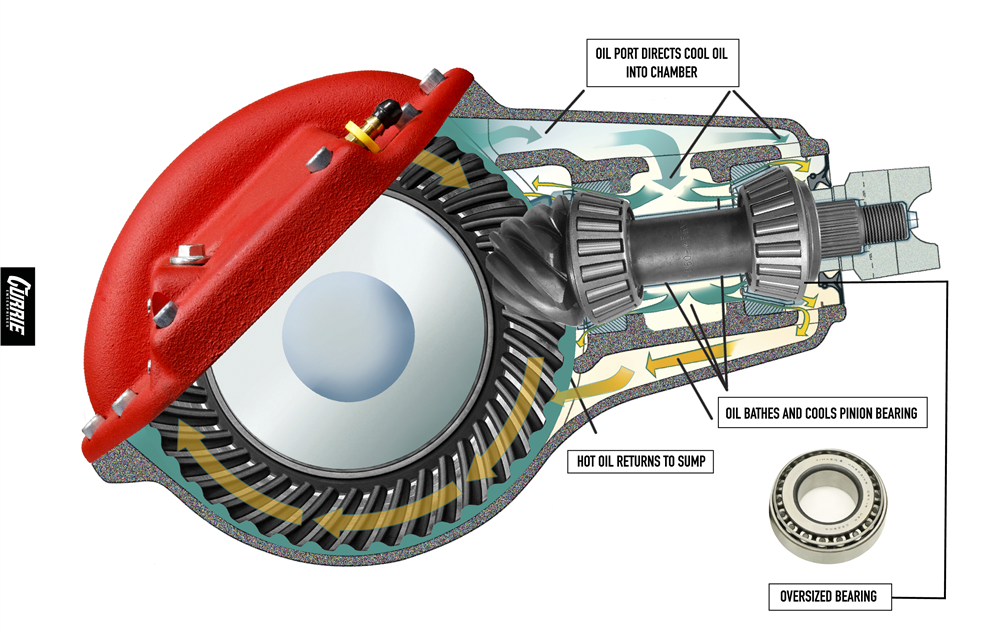
Currie High-Volume Flow-Through Oiling System
The oiling system is so efficient that it supports pinion angles up to 15 degrees to be run in rearend applications and still maintain proper pinion bearing lubrication.
We get asked this question almost every day, and the answer is straight up, you should only run 85W-140, API GL-6 rated conventional (non-synthetic) gear oil in a Currie axle assembly. You may hear about how synthetic gear oil provides reduced friction and wear; however, it may not be optimal for your setup – especially if you have a Ford 9-inch rearend. Hear us out.
The 9-Inch Gear Is Unique
The design of the 9-inch features a high-offset distance that places the center-line of the pinion gear 2.25-inches below the center-line of the ring gear, which is substantial when compared to the 1.125 to 1.5-inch offsets of other gear sets (see image below). The high-offset distance increases the contact patch between the ring and pinion teeth by approximately 30-percent and is a crucial reason for the legendary strength of the 9-inch gears. However, strength comes at a price, as this high-offset distance creates increased sliding friction and heat across the gear tooth face. Because of this, not using high-shear oil such as Currie’s 85/140w can lead to scoring and certain gear death, especially during extreme scenarios such as off-roading and racing. The increased pressure capabilities and wear resistance found in Currie’s GL-6 rated gear oils are designed with all this in mind to ensure your rearend’s gears and bearings are adequately protected under the most severe conditions.
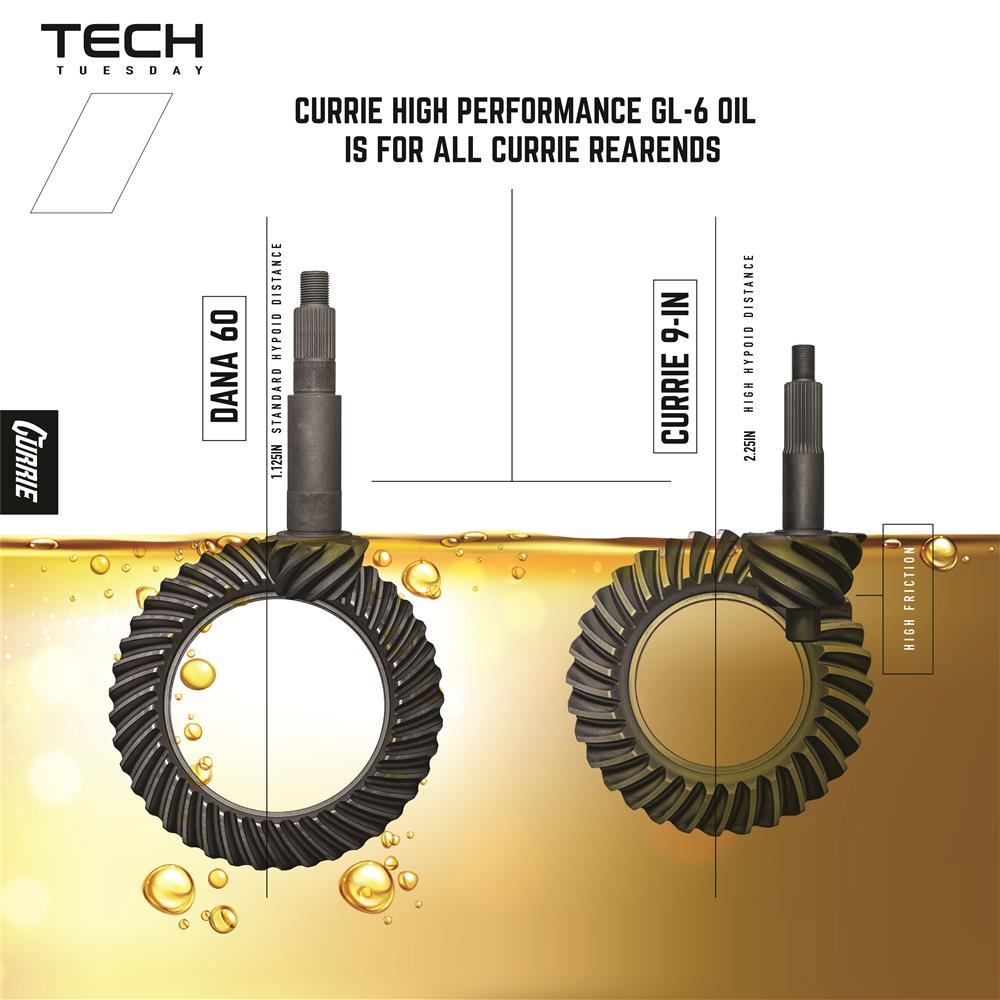
Pinion offset distance compared
API GL-5, Not Designed For A 9-Inch
Virtually all synthetic gear oils on the market today are only engineered to meet the API GL-5 specification, which Currie has found to be inadequate for the design of the 9-inch. The last 9-inch rearend rolled off the Ford assembly line in 1986, and it wasn't until 3-years later 1989 that the first synthetic gear oil, Mobile1 (GL-5 rated), hit the market. Just 9-years after the end of 9-inch production, in 1995, both the GL-6 standard and the test equipment were inactivated, making it unlikely that a synthetic oil manufacturer would go through the cost and effort to develop an oil to meet the obsolete GL-6 standard.
Conventional Oil Is Proven
Because many of today's commercially available synthetics are not engineered with the 9-inch's requirements in mind, Currie advises using only conventional 85W-140 non-synthetic GL-6 rated gear oil in all front and rearend applications. The viscous (thick) base stock of the 85W-140 oil (check out the videio)provides a cushion that helps protect the gears from shock loads and clings more effectively, pulling heat away from the tooth face and preventing localized heat build-up. The higher level of extreme pressure additives mandated by the GL-6 standard protects the gears from scoring and premature wear.
Racing and Severe-Duty
For high-performance applications such as drag cars, desert trucks, circle track, or anywhere a 10-inch gear makes sense, we recommend stepping up to our 250W conventional GL-6 gear oil. The higher viscosity provides additional protection from high shock loads, while increased levels of extreme pressure additives help further protect the gears against scoring loads.
Finally, conventional GL-6 rated gear oil is proven to work, which is why it's a requirement of our product warranty terms for all Currie axle assemblies. With 50-years of experience building and servicing rearends for every imaginable application, we are confident that our gear oil is an excellent choice for your next build.
Selecting the right differential for your rearend build is an important decision that will be with you for a very long time - if you get it right.
Below are short, not-too-technical, overviews of some of the most frequently asked about differential options for Hot Rods, Muscle Cars, and Muscle Trucks.
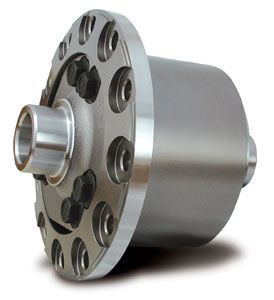
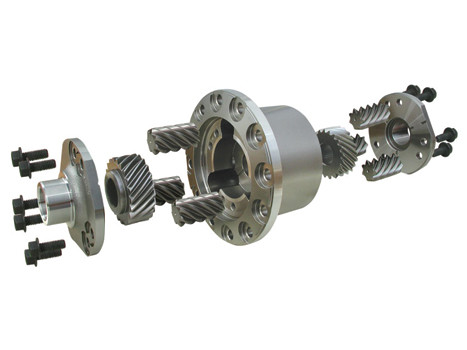
Detroit Truetrac - Helical-gear limited-slip (worm differential) is the modern replacement for the classic clutch-type posi. Under normal light throttle driving conditions, a Truetrac operates much like a standard open differential, allowing the rear wheels to rotate at slightly different speeds for smooth cornering. However, when accelerating (torque applied), the six helical-gears inside the unit smoothly and quietly engage, applying torque to both rear wheels equally, maximizing traction (think two equal length black stripes). Unlike a traditional clutch-type posi, a Truetrac requires no special oil additive or maintenance. With silky-smooth positive operation and no components to wear out, the Truetrac maintains day-one performance for the life of the unit.
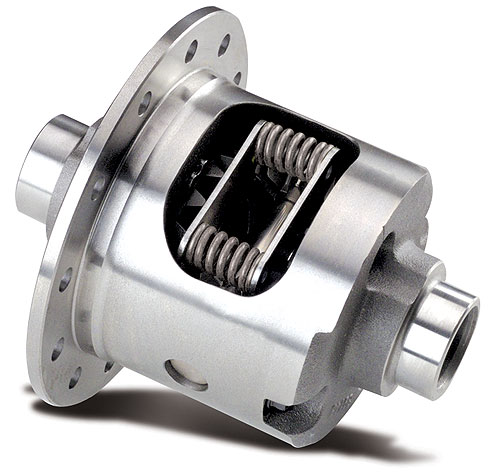

Trac-Lok/Posi-Trac – Clutch-type limited-slip (Posi), offered as original equipment in many GM and Ford performance cars, these units rely on clutches (friction plates) to transfer power to the wheels. In operation, the clutches slip just enough to allow for smooth cornering while engaging with more force as power (torque) is applied, driving both wheels equally. When used in a daily driver, these units function well; however, as the miles add up or with aggressive driving or track use, the clutches and other internal components will become worn and severely degrade performance. Luckily, rebuild kits are widely available so that these units can be restored to like-new performance. Additionally, if the vehicle sits for extended periods, the clutch plates can stick together, causing the unit to chatter and clunk until gear oil works its way in between the clutch plates. A friction modifier must be added to the gear oil to help prevent the clutches from moaning or chattering during normal driving.

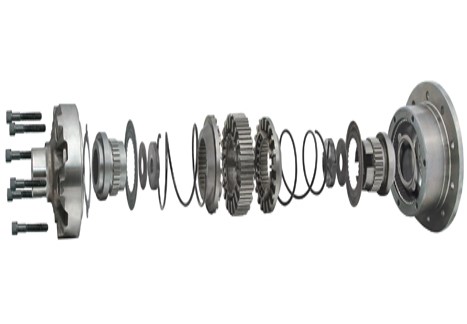
Detroit Locker - Automatic "ratcheting-style" differential is known for its reliability, rugged construction, and fully-locked performance on any surface. When power (torque) is applied in either forward or reverse directions, the unit locks both axles together like a spool. When coasting or rolling through a corner (no torque applied), the unequal speed of the inside and outside wheels causes the unit to unlock momentarily, before abruptly locking when power is applied. At the heart of the locker are two, spring-loaded forged steel side plates (one per axle) with large square-edged teeth that engage and disengage a matching center spider block. The interaction of the side plates and spider block teeth creates the signature ratcheting sound of the unit. The Detroit Locker is best suited for off-road or severe track use where maximum traction is required, and quiet/smooth operation is less important.
- 2025
- 2023
- 2020
- 2019

